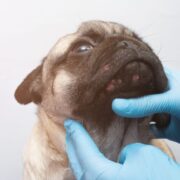It’s the bane of dog owners everywhere — the season of shedding. It’s actually more appropriate to say the seasons of shedding, but first things first. Not all dogs shed seasonally and not all dogs shed very much.
There are some breeds of dogs like Labrador retrievers, Newfoundlands, and Pekingese that shed a lot while other breeds like Poodles, Dachshunds, and Border terriers seem to not shed at all. There are reasons for these differences, but the real question is how do you handle dog shedding?
The Basics Behind Dog Shedding

According to the American Kennel Club (AKC), different dog breeds shed differently; some shed seasonally, others shed year-round, and some don’t seem to shed at all. The amount of shedding dogs experience varies by the different coat types.
Certain dog breeds like Golden retrievers have a thick double coat that consists of an outer coat and a thick undercoat. Dogs with a double coat are much more likely to shed year-round as opposed to seasonally.
The dogs that do shed seasonally tend to shed in the spring and fall, and you’ll notice that your dog’s coat will become lighter in the spring as they prepare for warm weather. This is their summer coat. In the fall, your dog’s coat will change once again and you’ll notice a higher incidence of shedding as he prepares his winter coat.
If you have one of these dogs who experience a shedding season, it will be important to brush them more frequently during that time. In fact, for any dog that sheds often, you’ll want to brush them even a few times a week during dog shedding season, but even if your dog isn’t a heavy shedder, you’ll still want to brush and groom them regularly. The occasional bath is also good for your dog and can help with shedding.
It’s important for getting rid of loose hair, and for keeping their coat shiny. It also helps them avoid skin problems because brushing stimulates blood circulation as the brush massages your dog’s skin.
Let’s Talk About Your Dog’s Coat
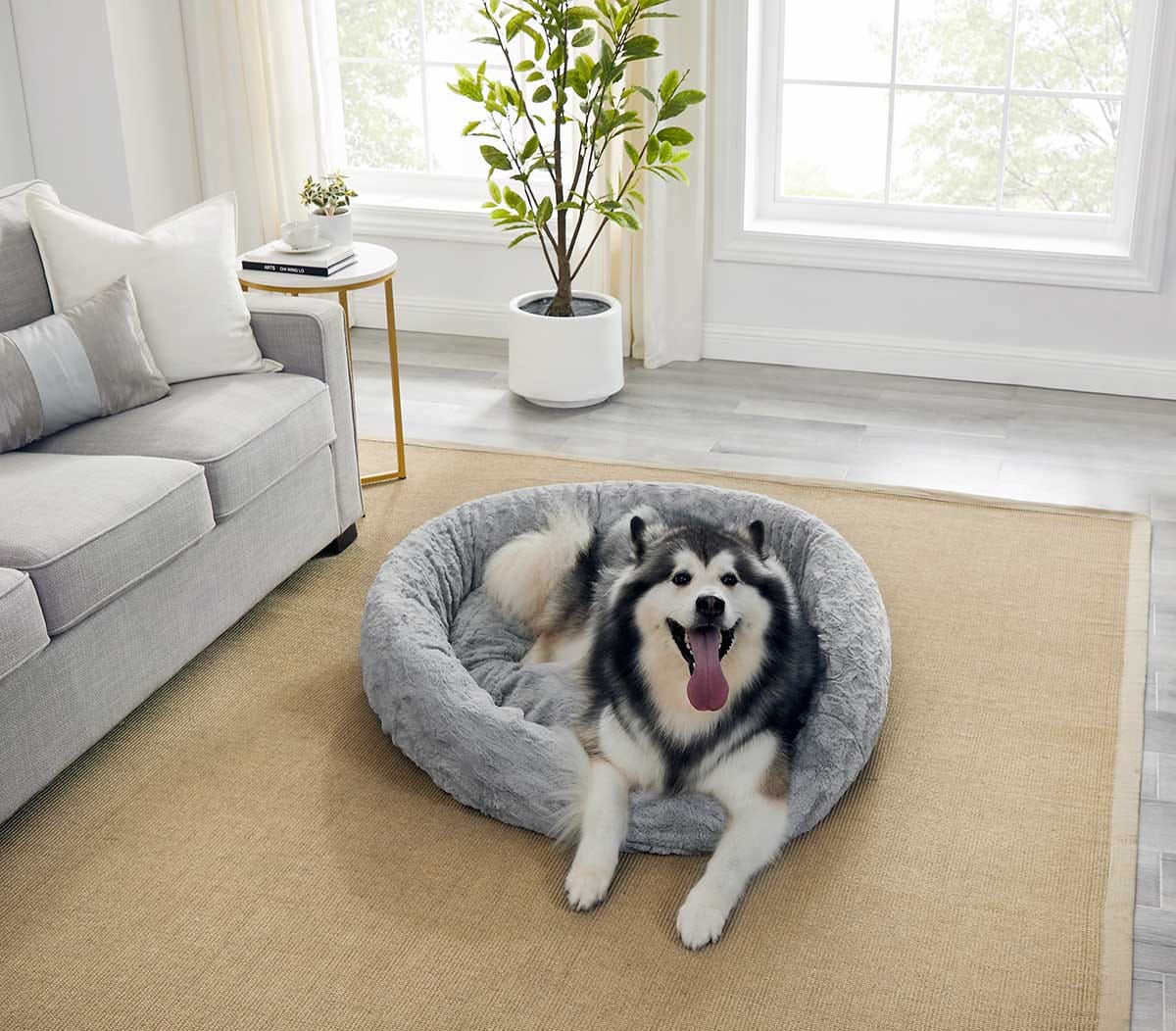
There are several different coat characteristics to think about when assessing your dog’s coat health. Let’s explore the differences:
Coat Layers
There are two types of coat layers: single coats and double coats. As mentioned previously, double coats involve two layers. There is the top coat that has long hair and the undercoat which has denser and shorter hair. It is the dogs with double coats like Siberian huskies that shed more than those with a single coat.
Coat Length
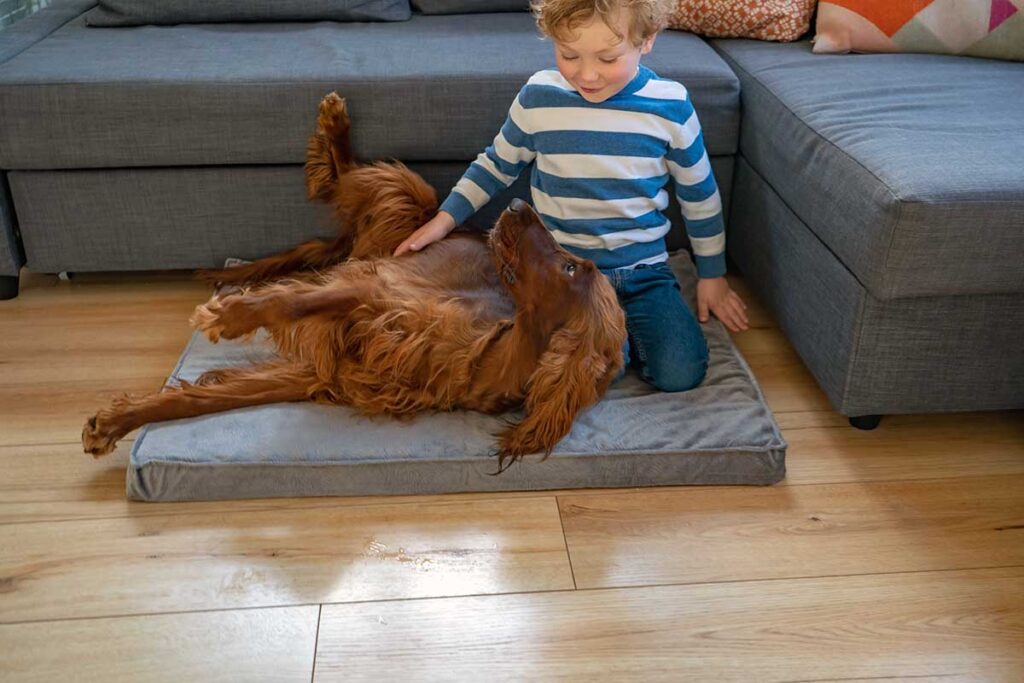
Another characteristic of your dog’s coat to consider is the length. Dogs with fur over two inches long are considered to be longhaired breeds. While it seems counterintuitive, long-haired dogs tend to shed less than those with shorter hair, but their hair is more prone to developing mats which can lead to dangerous skin problems.
Dogs with very short hair like miniature pinschers shed just as much, if not more than long-haired dog breeds because their coat grows continuously. Medium-haired dogs fall between the long and short-haired dogs. They typically have hair about an inch in length and they shed about the same amount as a long-haired dog.
Finally, there are hairless dog breeds like the Chinese crested dog and the Peruvian hairless dog. They don’t have hair, so they don’t shed, but they do have sensitive skin which requires extra care to keep it moisturized and to avoid skin problems.
Coat Texture
The final coat characteristic to consider is coat texture. Dogs with short hair that is very close to their body have what is considered a smooth texture. This coat type is high in shedding.
Dogs with a wire coat type are those with a dense undercoat. These dogs are seasonal shedders and tend to have longer hair that needs maintenance to prevent mats. Corded coat types are those dogs with fur that naturally cords itself into patches like the Komondor.
Dogs with corded hair shed very little. Dogs with wavy or curly hair have thick curls that are frequently close to the body. Though both of these types of dogs shed less than other dog breeds, they still require a lot of attention to maintain their coat and skin health.
For all coat types, it’s vital to know how to use shedding tools to properly groom your dog.
How to Use Shedding Tools for Grooming

Dog grooming requires the right grooming tools, and this is true even if you’re just brushing your dog. Brushing him is even more important if your dog sheds frequently, but even dogs that don’t shed much still benefit from regular grooming to have less dander. You can even make it a fun thing to do together at certain times of the year!
Even if you take your pooch to a groomer, you’ll still want to brush him between visits. How you accomplish this grooming depends somewhat on the length of your dog’s hair.
Short-Haired Dog Shedding Tools
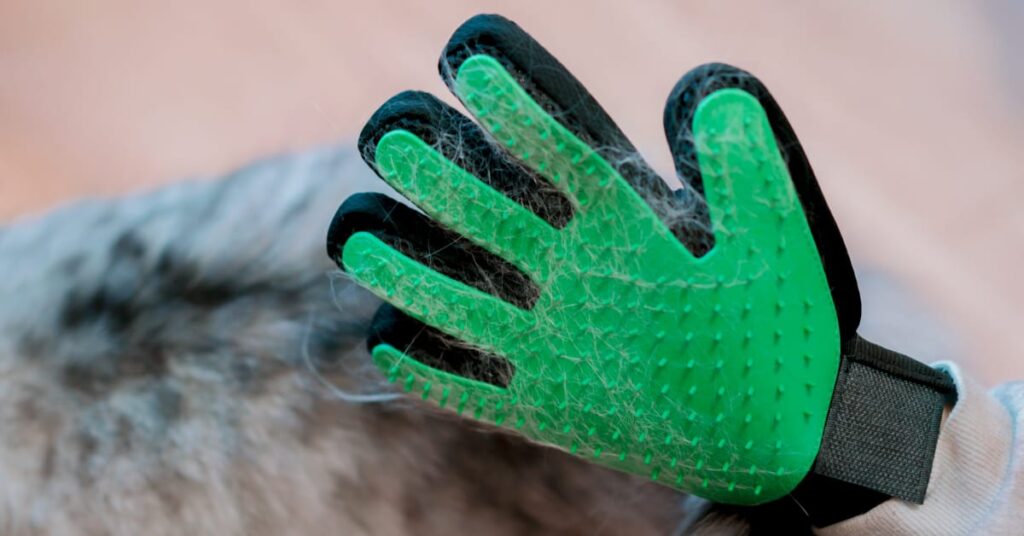
Dogs like beagles, pugs, and German shorthaired pointers tend to have shorter coats. By regularly grooming these dogs, you can help loosen any dead hair and then set it free using a natural bristle brush or something like a hound mitt or one of those gloves with bristles on the palm.
With these dogs, you want to begin by brushing in the opposite direction of the hair growth. That pulls the dead hair out. Then, brush in the same direction as the hair growth to actually remove those dead hairs. You’ll need to repeat this process a couple of times to get out all the dead hair and to help distribute the skin’s natural oils all over your dog’s coat.
If you’re using one of those hound mitts or gloves, you can massage the coat in a circular motion. That will loosen the dead hair and you can then brush it out by ‘petting’ them in the direction of the hair growth. Again, repeat it a few times, especially with seasonal shedding.
Long-Haired Dog Shedding Tools
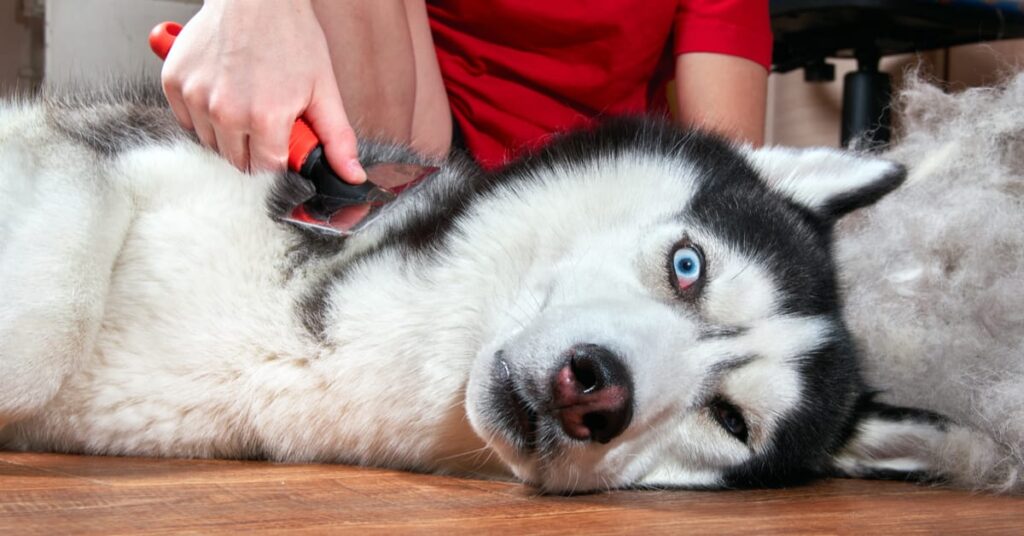
If your dog has a long curly coat or a double coat — especially those dogs with a downy undercoat and a harder outer coat (e.g., Pomeranians, Pembroke Welsh Corgis, and Collies) — you’ll want to use a tool like the Furminator Undercoat Deshedding Tool that gets under the outer coat to grab onto that downy undercoat and pull out those dead hairs. Slicker brushes are another excellent tool for these kinds of dogs.
You’ll want to begin by brushing the coat in both directions a few times until you see that you’re pulling less hair from the brush. As the shedding season really picks up, then you can switch over to your coat rake or shedding tool.
These types of tools vary a little bit in how they work, but you’re basically pulling the tool in the direction of the hair growth then up and away to remove the loose and dead hair. If you’re using those shedding tools that have blades, don’t press too hard.
If you come across mats or tangles, you’ll want to pick those out with a steel comb or mat splitter.
Seasonal Shedding versus Hair Loss from Health Problems

Sometimes your dog’s shedding is experiencing excessive shedding that is more serious than simply seasonal shedding, but what kind of health problems cause hair loss and how can you know the difference? Certain endocrine problems like hypothyroidism can cause hair loss by affecting the growth and health of hair follicles.
Endocrine problems will usually result in a pattern of patchy hair loss on certain parts of the body, typically at the base of the tail and on part of the legs and the back of the neck, and excessive shedding. You’ll also likely see your dog trying to scratch those areas of his body. Parasites like scabies which cause mange will result in a pattern of patchy hair loss all over the body.
Allergies can also cause skin problems and result in shedding problems and hair loss. With allergies, you’ll often see the skin is red or maybe has a rash and it itches your dog. If you see these kinds of symptoms and think your dog might have a skin problem, it’s usually a good idea to contact your veterinarian.
Anxiety and stress are other reasons your dog might experience excessive shedding. This can happen if you have unfamiliar people in the house or perhaps you’re getting work done and there are loud noises. This can cause your dog to shed because of the stress.
Providing something like a calming bed for your dog can help to alleviate some of that stress and maybe keep the hair off your couch too!
These kinds of health problems require more than regular brushing and combing, they require medical treatment from a DVM for the underlying condition. As one of the good pet parents, you’ll want to get your best friend checked out and treated properly.
Best Dog Breeds for Allergy Sufferers
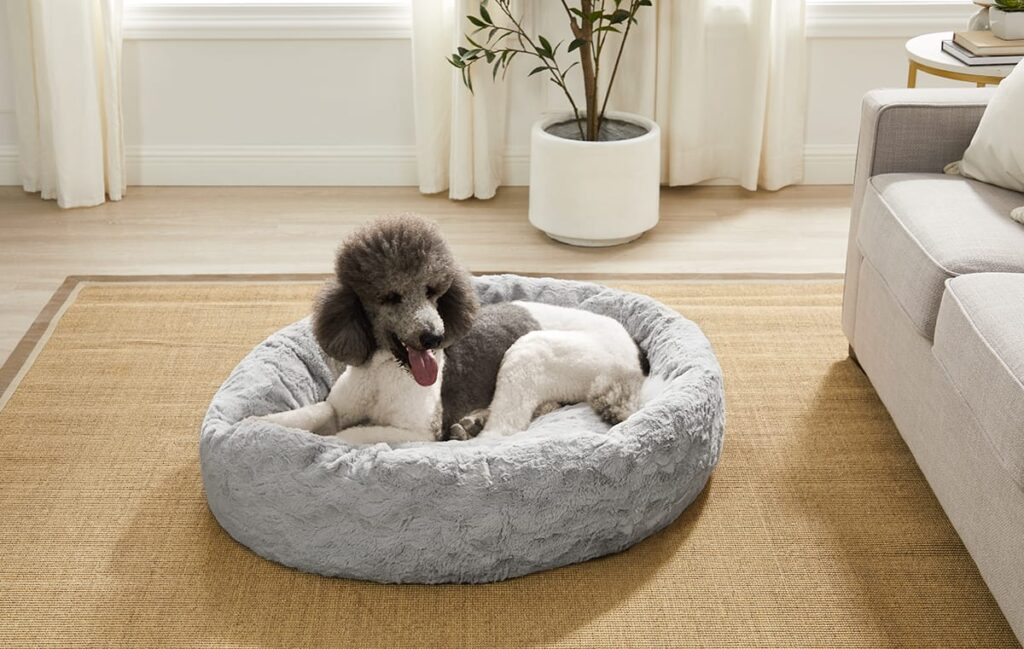
While all dogs except low maintenance hairless breeds (like an American Hairless terrier or Xoloitzcuintli) shed some, there are some dogs that are hypoallergenic for those dog lovers who suffer from allergies. You want a dog, but you also want to live allergy-free.
These dogs range from small, fluffy dog breeds to medium, large, and even rare dog breeds.
Dog allergies are no fun! But depending on your allergy symptoms, you can still have a hypoallergenic dog. Here are some of the best hypoallergenic dog breeds with minimal allergens.
- Bedlington Terrier: It’s a unique dog breed that looks a little like a lamb and has soft, curly, hypoallergenic hair.
- Bichon Frise: This is a small, cuddly, white dog that has hair that continuously grows. While it’s hypoallergenic, it still needs lots of grooming to avoid skin problems.
- Maltese: This is another small breed with a soft coat of hair that will grow long if you don’t regularly groom it to keep it shorter.
- Poodle: Poodles are famous for their fluffy, curly hair, but many people don’t know that it’s also hypoallergenic (hence the Labradoodle). It does require regular brushing to reduce shedding.
- Schnauzer: There are different sizes of Schnauzers that include the Standard, Miniature Schnauzer, and Giant Schnauzer. All three types have the same characteristic salt-and-pepper colored coats, arched eyebrows, and bristly whisker. They all also have a double-coat that is hypoallergenic, but which requires regular brushing.
- Yorkshire Terrier: Also known as the Yorkie, these small dogs have long or short hair that is more similar to human hair than other dog breeds. They have feisty personalities and won’t cause sneezing!
- Afghan Hound: You might not think it, but the Afghan Hounds’ long, silky locks are hypoallergenic too. They require lots of grooming though, but they are a beautiful and elegant dog breed.
- Soft-Coated Wheaten Terrier: These were originally Irish farm dogs, and they are known for being very outgoing and loyal. Their soft coats are low-shedding, but they do need regular brushing to keep from forming mats.
- Kerry Blue Terrier: These dogs are famous for their beautiful, wavy, blue coat. They were originally farm dogs and are affectionate and alert. They make great watchdogs and family companions.
- Portuguese Water Dog & Irish Water Spaniel: These are curly-haired dogs that have lots of energy. They also have a thick double-coat that is water repellent, and bonus, it only needs to be brushed once every couple of weeks so you can minimize allergic reactions.
- Chinese Crested Dog: These dogs are unique because of their spiked hairdo. It sets them apart from other dog breeds. Their hairless body means they don’t shed and there’s nothing to be allergic to, but there is a version of this dog that doesn’t even have the spiky hairdo if you’re looking for a truly hairless dog.
Other hypoallergenic dog breeds include the Affenpinscher, Afghan hound, Coton de Tulear, Basenji, Lagotto Romagnolo, Havanese, and Shih Tzu.
Even though pet allergies and itchy eyes suck, there are genetic loopholes to being with man’s best friend.
Final Thoughts

Even the best pet parents can get frustrated during shedding season, but with regular grooming and coat care, you can minimize pet dander, your dog’s shedding, and help keep his skin and coat healthy.
Whether your furry friend sheds seasonally, year-round, or is hairless and never sheds, by knowing the difference between shedding styles and a genuine health problem, and by taking good care of your dog’s coat, you can help make him and you much happier!

